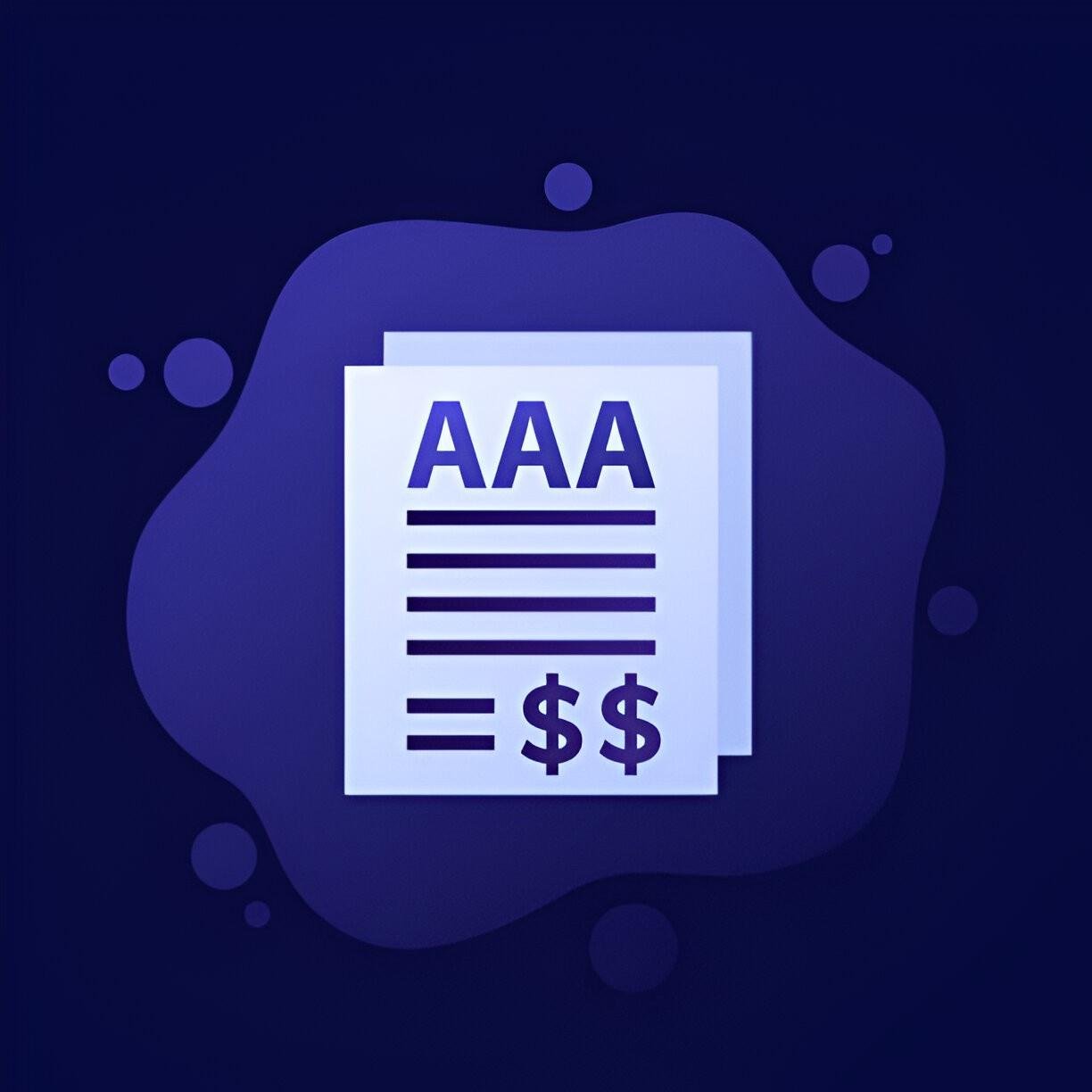When I first started investing, I assumed that the safest bet was to stick with mutual funds that carried the highest ratings—often labeled “AAA” by research firms and platforms. But I quickly realized that understanding what “AAA” actually means, how it’s assigned, and how it relates to real-world performance is more complicated than it sounds. In this article, I’ll explain how I assess AAA-rated mutual funds, what makes them different from other highly rated funds, and how I decide whether to include them in my portfolio.
Table of Contents
What Is a “AAA” Mutual Fund?
In the bond world, “AAA” is a credit rating assigned to the safest issuers. In mutual funds, “AAA” isn’t a universal standard—it depends on the rating methodology of the platform or agency. For example:
- Morningstar doesn’t use AAA but assigns up to 5 stars based on past risk-adjusted performance.
- Lipper Leaders rates funds across five dimensions: Total Return, Consistent Return, Preservation, Expense, and Tax Efficiency.
- TheStreet Ratings and other platforms sometimes give AAA labels based on proprietary multi-factor models.
In general, a mutual fund gets labeled “AAA” when it meets the highest standards for risk-adjusted returns, fee structure, manager tenure, and volatility. But I always dig deeper because these labels can be misleading if I don’t understand the context.
Characteristics of a Typical AAA-Rated Fund
From my experience, most AAA-rated mutual funds have the following traits:
- Low Standard Deviation – Their returns don’t fluctuate wildly.
- Long Manager Track Record – Usually over 10 years with the same team.
- Reasonable Fees – Expense ratios tend to be below 0.75%.
- Strong Consistency – Outperform their category in most rolling periods.
- Downside Protection – Avoid large drawdowns during bear markets.
Let’s compare the traits of a AAA-rated fund to a standard 3-star fund:
| Feature | AAA Mutual Fund | Average 3-Star Fund |
|---|---|---|
| Expense Ratio | 0.45% avg | 0.85% avg |
| 5-Year Annualized Return | 8.7% | 6.5% |
| Max Drawdown (5-Year) | -10.2% | -17.8% |
| Standard Deviation | 9.5% | 13.4% |
| Turnover Ratio | 20–30% | 50–75% |
Why Rating Alone Isn’t Enough
High ratings can reflect strong past performance. But investing isn’t backward-looking. One reason I treat ratings cautiously is the potential for mean reversion—top performers often regress to the mean. Also, many ratings ignore:
- Sector concentration risk
- Macroeconomic exposure
- Tax inefficiencies
- Hidden fees in load classes
For example, a AAA-rated fund in 2020 may have done well due to a tech-heavy allocation, but that doesn’t mean it will outperform in a value-led recovery.
Real Example: Evaluating a AAA Fund
Let’s take a hypothetical fund—EverTrust Core Equity Fund—rated AAA by a leading platform. Here’s how I analyze its numbers:
- Initial Investment: $10,000
- 5-Year Annualized Return: 9.1%
- Expense Ratio: 0.60%
- Volatility (Std Dev): 10.2%
Now, compare it to an S&P 500 index fund like VFIAX:
- Return: 11.3%
- Expense: 0.04%
- Volatility: 16.5%
To compare after-fee compound growth over 20 years:
\text{AAA Fund Value} = 10,000 \times (1 + 0.091 - 0.006)^{20} = 10,000 \times (1.085)^{20} \approx 10,000 \times 5.06 = 50,600 \text{VFIAX Value} = 10,000 \times (1 + 0.113 - 0.0004)^{20} = 10,000 \times (1.1126)^{20} \approx 10,000 \times 8.33 = 83,300Despite the AAA rating, the index fund wins on return. However, the AAA fund might offer smoother ride and better capital preservation.
Factors I Weigh Beyond Ratings
When considering a AAA mutual fund, I evaluate:
- Tax Efficiency: If it’s in a taxable account, I want low turnover and minimal distributions.
- Role in My Portfolio: Does it overlap with other holdings? Is it a core or satellite?
- Fund Flows: Is the fund seeing major inflows or redemptions? That can affect liquidity.
- Manager Behavior: Has there been any recent change in leadership or strategy?
- Sector Exposure: I map its top holdings to avoid unintentional concentration.
Ratings give me a starting point, but not the final answer.
How AAA Funds Perform During Downturns
During the 2020 COVID crash, many AAA-rated funds held up better than average. Consider this drawdown comparison:
| Fund Type | Peak-to-Trough Loss | Time to Recover |
|---|---|---|
| AAA Balanced Fund | -11.4% | 5 months |
| Average Balanced Fund | -17.6% | 9 months |
| S&P 500 Index | -34% | 6 months |
Lower volatility can help me stay invested. I’ve seen friends panic sell after large drawdowns in higher-risk funds, locking in permanent losses. That’s where the value of smoother AAA funds comes in.
How I Fit AAA Funds into My Portfolio
I don’t chase ratings. But when a fund earns a high rating and fits my asset allocation needs, I consider it. Here’s how I use them:
- For stability: I use AAA-rated balanced or conservative allocation funds in my taxable accounts.
- For income: I use AAA municipal bond funds for tax-free interest.
- For defensive equity: I favor large-cap dividend funds with AAA ratings when I want stock exposure but low volatility.
Pros and Cons of AAA Mutual Funds
| Advantage | Disadvantage |
|---|---|
| Generally lower risk | May underperform in bull markets |
| Strong long-term consistency | Often carry higher fees |
| Easier to hold during downturns | May be over-diversified (diluted returns) |
| Good for conservative portfolios | Less flexible for aggressive investors |
Final Thoughts
AAA-rated mutual funds can be strong additions to my portfolio—but only if I understand what the rating means, how the fund is managed, and how it aligns with my goals. I never rely on ratings alone. Instead, I view them as an efficient way to screen candidates before deeper analysis.





